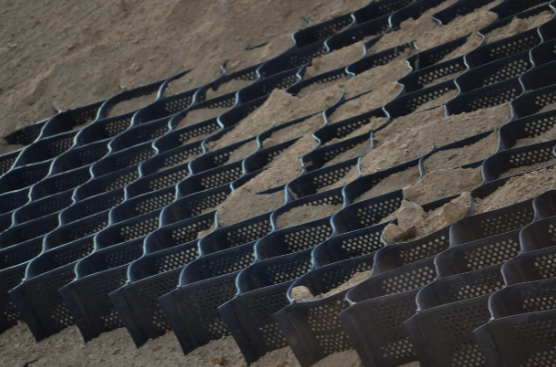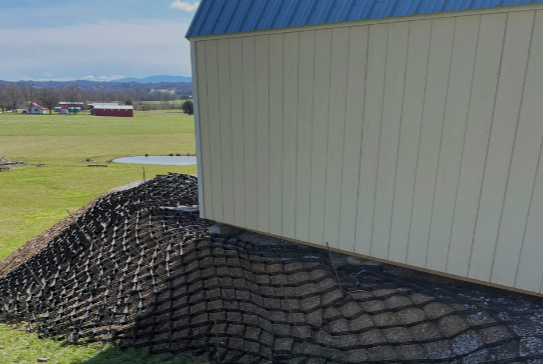- Understanding the Role of Geomembrane Liners in Waste Management
- Innovations in Geomembrane Liners for Water Management
- Geomembrane Liners: A Comprehensive Guide
- The Future of Geomembrane Liners in Civil Engineering
- Geomembrane Liners: Enhancing Landfill Stability
Manager:Alvin Wang
WhatsApp:+62 8983806051
Tel:+86 10-5797-1075
Email:steelwang@okorder.com
Address:3rd Floor, No.2 Building, No.1 Sanlihe Road
What is the lifespan of a Geocell?
Geocell slope protection has emerged as a vital solution in the field of civil engineering, particularly for mitigating soil erosion and stabilizing slopes. Among the array of geotechnical materials available, geocells have gained prominence due to their versatility and effectiveness in various applications. However, one crucial aspect that engineers and project managers often consider is the lifespan of geocells. Understanding the longevity of these materials is essential for planning and executing slope protection projects efficiently.

Introduction to Geocell Slope Protection
Before delving into the lifespan of geocells, it's imperative to grasp the concept of geocell slope protection. Geocells, also known as cellular confinement systems, are three-dimensional honeycomb-like structures made from high-density polyethylene (HDPE) or other durable materials. These cells are interconnected and filled with soil, creating a stable matrix that enhances load distribution and prevents soil erosion.
Slope protection geocells are specifically designed to reinforce and stabilize slopes, embankments, and retaining walls. They offer a cost-effective alternative to traditional methods such as riprap, gabions, and concrete structures. Geocell slope protection systems provide erosion control, vegetation support, and long-term stability, making them ideal for various terrain and environmental conditions.
Factors Influencing Geocell Lifespan
Several factors influence the lifespan of geocells in slope protection applications. Understanding these factors is crucial for assessing the durability and performance of geocell systems over time. Some key considerations include:
1. Material Quality: The quality of the materials used in manufacturing geocells significantly impacts their lifespan. High-quality HDPE or polyester materials with UV stabilizers and antioxidants offer better resistance to environmental degradation and prolong the lifespan of geocells.
2. Environmental Conditions: The geographical location, climate, and exposure to environmental factors such as sunlight, temperature fluctuations, moisture, and chemical exposure play a significant role in determining geocell lifespan. Harsh environmental conditions can accelerate degradation and reduce the longevity of geocells.
3. Installation Techniques: Proper installation is critical for maximizing the lifespan of geocells. Factors such as soil preparation, compaction, anchoring, and connection methods influence the structural integrity and performance of geocell slope protection systems. Improper installation can lead to premature failure and reduced lifespan.
4. Traffic Loads and Use: The intensity and frequency of traffic loads or applied loads on the slope can affect the durability of geocells. Heavy vehicular traffic or dynamic loads may cause deformation, abrasion, or mechanical damage to the geocell structure, compromising its lifespan.
5. Vegetation Growth: Vegetation establishment and growth within the geocell matrix can enhance slope stability and longevity by providing additional reinforcement and erosion control. However, inadequate vegetation growth or maintenance can impact the effectiveness of geocell slope protection systems.
Assessment of Geocell Lifespan
Determining the exact lifespan of geocells can be challenging due to various factors and uncertainties involved. However, engineers and researchers employ empirical data, field observations, accelerated testing, and mathematical models to estimate the expected lifespan of geocell slope protection systems.
Long-term field studies and case histories provide valuable insights into the performance and durability of geocells in real-world applications. Monitoring the condition of geocell installations over time allows engineers to assess factors such as deformation, soil confinement, vegetation growth, and erosion control effectiveness.
Accelerated testing methods, such as laboratory experiments and environmental chamber testing, simulate aging processes and environmental conditions to evaluate the resilience and longevity of geocells. These tests help identify potential weaknesses, design improvements, and optimal materials for enhancing geocell lifespan.
Mathematical models and predictive algorithms consider various parameters and variables to estimate the service life of geocells based on factors such as material properties, environmental conditions, loading scenarios, and maintenance practices. These predictive tools assist engineers in optimizing design parameters and selecting appropriate geocell configurations for specific slope protection applications.
Maintenance and Monitoring
Regular maintenance and monitoring are essential for prolonging the lifespan of geocell slope protection systems. Inspecting the integrity of geocell structures, repairing damaged cells, replenishing lost infill material, and promoting vegetation growth contribute to the long-term performance and effectiveness of geocell installations.
Monitoring techniques such as visual inspections, drone surveys, geospatial imaging, and instrumentation (e.g., strain gauges, inclinometers) provide valuable data on the behavior and condition of geocells over time. Early detection of issues allows for timely intervention and corrective measures to prevent further deterioration and extend the lifespan of geocell slope protection systems.

Conclusion
Geocells offer an effective and sustainable solution for slope protection, erosion control, and soil stabilization in civil engineering applications. While the lifespan of geocells depends on various factors such as material quality, environmental conditions, installation techniques, and maintenance practices, engineers employ empirical data, testing methods, and predictive models to estimate and optimize geocell lifespan.
By understanding the factors influencing geocell longevity and implementing proper design, installation, and maintenance strategies, engineers can ensure the durability and performance of geocell slope protection systems for years to come, safeguarding infrastructure and mitigating environmental risks."






